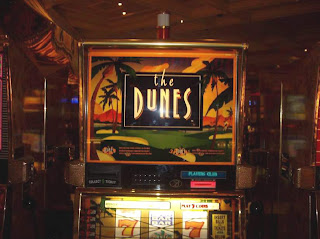Perhaps sensing that it was up the proverbial creek with its Section 2(d) claim, Opposer Morgan Creek Productions, on the day its trial brief was due, filed a motion to

add a claim of fraud, asserting that the issue had been tried by the "implied consent of the parties." The Board, after reviewing the pertinent testimony transcript, denied the motion and then went on to rule against Opposer on likelihood of confusion. It found Applicant's mark
MORGAN CREEK OUTFITTERS (in standard character form) for various clothing items not likely to cause confusion with Opposer's mark
MORGAN CREEK & Design, registered for motion pictures, dvds, and cds.
Morgan Creek Productions, Inc. v. Foria International, Inc., 91 USPQ2d 1134 (TTAB 2009) [precedential].
 Was fraud tried or not?
Was fraud tried or not? Opposer claimed that Applicant did not use its mark on "dress shirts," one of the items listed in its identification of goods, and asserted that the issue first came to light during cross-examination of Applicant's witness. After several questions about dress shirts, counsel began sparring, and Opposer's counsel declared:
I’m putting you on notice that I’m going to move to amend the opposition to include a charge of fraud in the patent and trademark office on the grounds that the application includes dress shirts which were not sold under the mark prior to the filing of the application.
Applicant’s counsel replied, "You can do whatever you want." No redirect testimony was taken.
The Board noted that Applicant's counsel did not object to the line of questioning on the ground that fraud had not been pleaded, but "it appears to us that as soon as it became clear to applicant's counsel what the import of opposer’s questions were, applicant's counsel began interposing objections. As a result, we cannot say that applicant consented to the issue of fraud being tried."
[W]e cannot view opposer’s counsel’s statement and applicant’s retort thereto as the equivalent of showing that the issue of fraud was actually tried.
The Board pointed out that, since a motion to amend can be based on newly obtained information, "applicant could have understood opposer's 'notification' as advising applicant that it intended to seek leave to amend under Federal Rule 15(a), and to reopen the proceeding, including reopening discovery and testimony, in order to add the ground of fraud."
The Board observed that the question is basically one of fairness. "The non-moving party must be aware that the issue is being tried, and there should be no doubt on the matter." Here there is a question as to whether Applicant was aware that the cross-examination was to be the last evidence on the issue. And so the Board could not conclude that fraud was tried by consent.
[In a footnote, the Board stated, in
dictum, that the testimony did not prove fraud "to the hilt," as the law requires, because the testimony was ambiguous.]
Likelihood of confusion: Opposer asserted likely confusion both as to its movies, cds, and dvds, for which its mark was registered, but also as to caps, t-shirts, and baseball shirts. It claimed fame for its mark as to the former. Despite Opposer's twenty years of use of the mark, production of 34 movies (including
Ace Ventura,
Robin Hood,
Last of the Mohicans, and
Man of the Year) viewed by 150 to 250 million people, and millions of dollars in advertising, the Board found that Opposer failed to meet its burden to prove fame. Opposer’s sales and advertising figures were not placed in context, and Opposer's mark is displayed in many advertisements in a subordinate role to the film title and the actors' names. The Board did, however, find the mark to be a strong mark for motion pictures.
The crucial issue, then, was the relatedness of the goods. Opposer lamely argued that movies (and cds, and dvds) are related to Applicant's clothing for Section 2(d) purposes because:
... motion picture theaters and clothing stores may be located in the same shopping malls and that sometimes a clothing store may be within 100 to 200 feet from the entrance to a motion picture theater in the mall. Consequently, the conditions exist for confusion, mistake, or deception to arise when patrons of the motion picture theater, on their way to or from a MORGAN CREEK film or on their way from having seen a trailer advertising a forthcoming MORGAN CREEK film, with the memory of the MORGAN CREEK mark and name fresh in their minds, or who have a recollection of the MORGAN CREEK & Design mark, enter a clothing store and see clothing marked with the words MORGAN CREEK OUTFITTERS.
The Board was wholly unimpressed. First, there was no evidence that the motion picture industry uses "articles of clothing as promotional and advertising merchandise, let alone to promote their studio names or house marks in such a manner." Second, "it is far more likely that it is the title of and actors in the movie, rather than the MORGAN CREEK logo, that will be associated with the film." Third, and most importantly,
the mere fact that clothing of the type identified in applicant’s application can be sold in a store in a mall, and that one of opposer’s motion pictures can be shown in a movie theater in the same mall, is not a sufficient basis on which to find that the goods are related. It has long been held that the mere fact that two different items can be found in a supermarket, department store, drugstore or mass merchandiser store is not a sufficient basis for a finding that the goods are related.
The Board noted that, under Opposer's reasoning, "all items that could be sold in a mall would be considered related. And since malls sell a wide variety of items, opposer’s position would essentially give it a right in gross, something that the trademark law prohibits."
Similarly, the mere fact that cds and dvds may be found in malls is an insufficient basis for finding them related to clothing for Section 2(d) purposes.
And so the Board concluded that Opposer did not establish a likelihood of confusion between Applicant's clothing and Opposer's movies, cds, and dvds.
The Board next found that Opposer did not established common law rights in its mark for clothing. Opposer gave away several hundred baseball jerseys and an unspecified number of t-shirts to employees and friends, but not to the general public. As to the thousands of caps that Opposer gave away to unidentified groups, the Board assumed that they too were given to employees and friends rather than to the general public. In short, there was "no clear information that Opposer distributed any clothing items to the general public, let alone in any numbers to make an impression, or that they have been distributed on a regular or recurring basis."
The Board therefore dismissed the opposition.
 TTABlog comment:
TTABlog comment: Ouch! Not even Jim Carrey could get a laugh out of this decision.
Presumably, Opposer did not seek leave to amend under Rule 15(a),
Fed R. Civ. P., because it felt it had waited too long (more than three months) to raise the issue. [See, e.g.,
this TTABlog posting]. So it tried the "tried by consent" route.
TTABlog postscript: Compare this decision with
In re Picture Entertainment Corporation, Serial No. 78917269 (June 10, 2009) [not precedential], in which (in an another opinion written by Judge Seeherman) the Board affirmed a Section 2(d) refusal to register the mark
LA CONFIDENTIAL for clothing in view of a prior registration of the same mark for comic books and fiction books.
Text Copyright John L. Welch 2009.


































